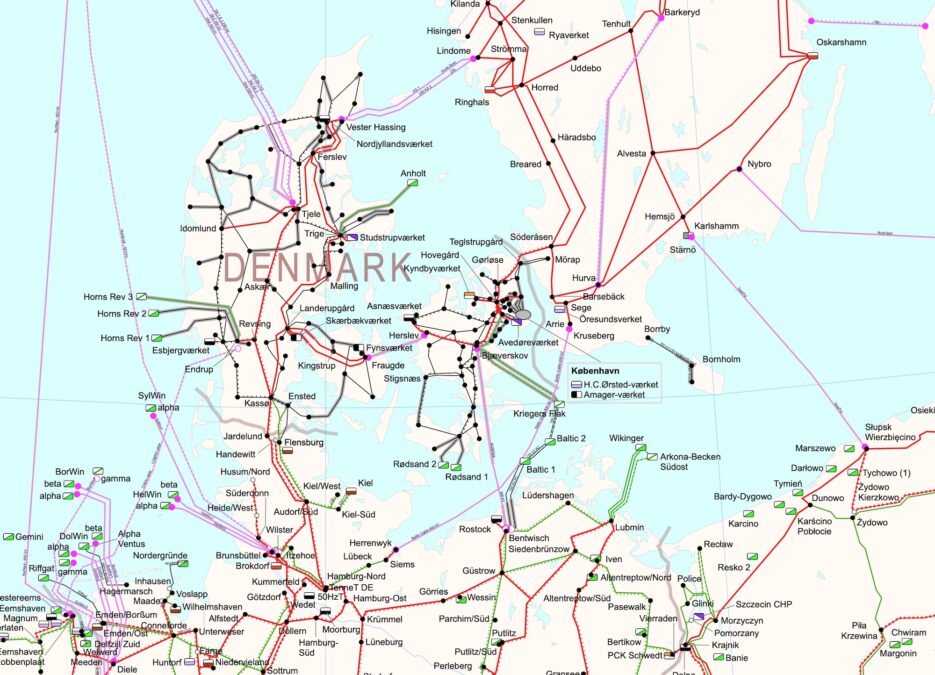
Happiness plus a smart energy policy – why should the Nordics have all the fun?
Like many other people I look with envy at the Scandinavian social democracies. The five Nordic countries are among the seven happiest nations in the world.
As an energy policy researcher what makes me particularly happy are their policies to retire fossil fuels. I have been tracking Denmark’s strategy to reach zero net emissions across the economy by 2050. Denmark will phase out coal by 2030, through increasing energy efficiency and renewables.
My research is presented in The Nordic Edge, a new book about Scandinavian policy lessons for Australia, produced by the Australia Institute and our Nordic Policy Centre. Denmark has steadily moved from reliance on imported oil to locally generated, clean energy, over a period of four decades. The transition has been supported by groups across the society and by successive coalition governments across the political spectrum.
For fifty years scientists have been warning we are headed to global ecological collapse and need to redesign the economy around a sustainable, long-term vision. Political parties have to come together to agree on strategies that will be maintained for decades, regardless of which parties win elections.
New research by the University of Sydney’s Professor Christopher Wright and his colleagues shows how coal, oil and gas companies have worked to create a ‘fossil fuel hegemony’ in Australia that prevents the country from having a responsible national climate policy.
This is a huge problem. Even in electricity, where renewable energy is beating fossil fuels on price, the debate is often dominated by vested interests not the public interest. However I suggest there are possibilities for national climate action if the focus is on renewable energy expansion and negotiated across multiple parties.
The Danish Way – many voices, one song
Every five years parties across the political spectrum in Denmark re-negotiate the ‘Danish Energy Agreement‘. This is a sophisticated political accord that sets long term goals for clean energy transition. It includes detailed short term plans, right down to funding allocations.
This multiparty consensus is better than the classic Australian ‘winner-takes-all’ politics at making a climate and resources strategy and sticking to it.
Great Danes – cleaner AND smarter
By 2030, in addition to phasing out coal generation, Denmark plans to surpass 100% renewable energy for electricity and 90% fossil-free district heating, which is a major energy end-use in such a chilly country. Danish companies lead the world in onshore and offshore wind.
It is easier for Denmark to rely on renewables because the grid is interconnected to other countries. However the point is that successive governments in Denmark have negotiated long term plans with minor parties and successfully implemented them.

Source: ENTSO-E Transmission System Map
Fifteen years ago renewable energy technology overtook conventional energy in Danish exports. Wind technology exports were worth AU$14.6 billion in 2019 and the sector employs more than 33,000 people. Vestas, the Danish wind turbine manufacturer, dominates the global sector with a market share of 18 per cent.
Denmark is shifting to ever cleaner energy and the benefits of this are amplified because it is also using energy more efficiently. For a decade until 2015 Danish manufacturing has improved cost competitiveness by 9 per cent, while reducing energy consumption by 2 per cent per year.
From energy wars to consensus
In The Carbon Club, award-winning journalist Marian Wilkinson documents how the ‘Greenhouse Mafia‘ of big polluters has influenced Australian climate policy for over two decades, breaking the careers of three prime ministers. This means if a Labor government makes strong climate decisions these will usually be reversed by the next Liberal National Coalition government.
This contrasts strongly with Denmark where the electoral system produces coalitions of parties forming government. This encourages negotiation towards broad political consensus to find solutions – such as the Danish Energy Agreement process.
It is worth noting that Australia’s reliance on ‘majoritarian’ election of the national government makes it an outlier; a majority of nations have at least some proportional representation and this majority has increased significantly since the 1980s.
Despite fossil fuel ‘hegemony’ and the hostility of the federal LNP to climate action, Australian governments have forged durable, multiparty climate policies, generally focused on renewable energy. The three examples below show multiparty consensus emerging from proportional representation in the Australian Senate, the NSW Upper House and the unicameral Australian Capital Territory parliament.
Nordic NSW and consensus ACT
The passing of the Electricity Bill is a historic victory for the people of NSW. It will deliver thousands of jobs, billions in investment & some of the cheapest reliable energy in the world. It only occurred because Australia’s leading political parties & indies worked together.
— Matt Kean MP (@Matt_KeanMP) November 25, 2020
NSW is Australia’s most populous state. In November 2020, the Liberal National government legislated an ambitious plan to build enough large-scale renewable energy to allow the state’s coal power stations to retire.
Matt Kean, the Energy and Environment Minister, steered the Electricity Infrastructure Investment Bill through the upper house with support of four non-government parties: Labor, Greens, Christian Democrats and Animal Justice. It passed 27 votes to 4.
The single house of the Australian Capital Territory was formed in 1988 and uses proportional representation exclusively. A single party has held government only once (Labor, 2004 – 2008). The ACT formulated its Greenhouse Strategy in 1993 and has had detailed climate plans since 2007. Since 2008 Labor has governed either in a formal centre-left coalition with the Greens or with Greens supporting the minority Labor government.
Proportional representation has directly led to ambitious and stable climate policy in the ACT. In 2019 it became the first jurisdiction outside EU to transition from fossil-fuel based supply to 100% net renewables.
Australia’s Scandinavian Senate
At the federal level Australia has had significant, enduring, clean energy policies. The first of these, the Renewable Energy Target was created by conservative Prime Minister John Howard in 2000 and supported by subsequent Labor Prime Ministers. John Howard’s original target was 2% of electricity from new renewable energy by 2010. The final target was 23.5 per cent, reached in 2020.
The most interesting example are the clean energy innovation agencies formed by the minority government of Prime Minister Julia Gillard. No party won a majority in the House of Representatives at the 2010 election. Labor leader Gillard negotiated with the Australian Greens and two conservative rural independent MPs to form government. They agreed to a carbon market and $13 billion for clean energy innovation investment and grants through the Clean Energy Finance Corporation and the Australian Renewable Energy Agency.
In 2013 Labor was defeated and incoming Prime Minister Tony Abbott promised to dismantle the whole policy. When he put repeal legislation to the Senate, a range of conservative Senators sided with Greens and Labor to defend the CEFC and ARENA. They endured and both are now central to the current conservative government’s climate policy of ‘technology not taxes‘.
Consensus Can Do
The world is waiting for Australia and other countries to deliver credible climate targets. The United Nations Climate Change Conference starts on October 31. Australia needs the Government to set a credible long term and short term climate target. While we are waiting for a rational, comprehensive energy policy at the federal level, there is much to be done through multiparty consensus.
The Liberal National Coalition, Labor and Greens parties could reach agreement to reform the National Electricity Market. This would open it up to competition from renewable energy and batteries and improve the development and coordination of transmission infrastructure. That would drive coal out faster, help reduce prices and maintain reliability and security.
Australia might not be as far from Danish democracy as we think.
Dan is an energy regulatory expert who works across disciplines to accelerate the clean energy transition. He has 20 years experience in communications, politics, and sustainability.
Share
We believe in open and honest access to knowledge. We use a Creative Commons Attribution NoDerivatives licence for our articles and podcasts, so you can republish them for free, online or in print.







